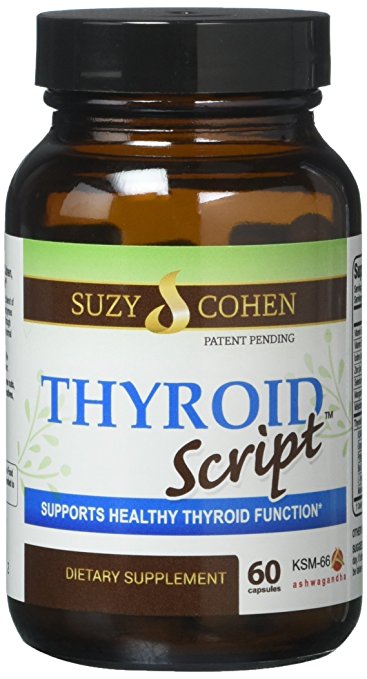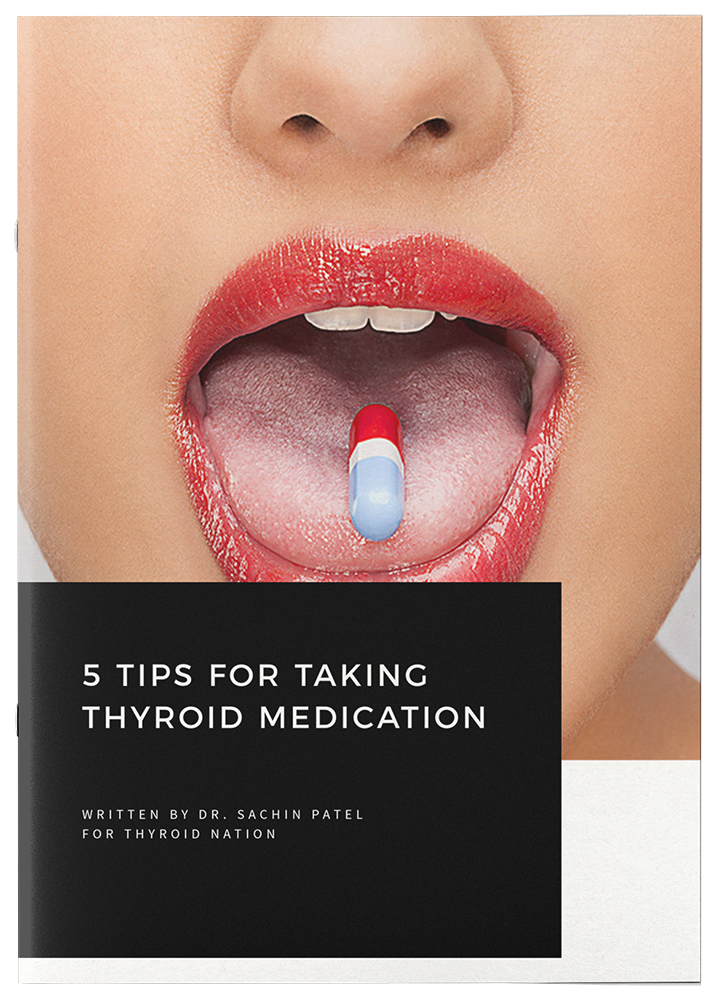
Jill Grunewald, Guest
Thyroid Nation
What Is Estrogen Dominance?
Many women today have estrogen dominance – a condition where estrogen is high in relation to progesterone. It doesn’t necessarily mean that estrogen is elevated (although most of the time it is) – it means that there is not enough progesterone production to oppose estrogen and keep it in check.
As if hypothyroidism wasn’t enough of an epidemic, estrogen dominance is epidemic as well and can have some serious implications for thyroid function. Kind of a double whammy.
The role of estrogen in hypothyroidism is well-researched. Estrogen directly affects the thyroid by thwarting its ability to produce thyroid hormones. To get that thyroid fired and humming along, it’s critical to address estrogen.
Estrogen Dominance More Likely During Perimenopause And Menopause
Although women of any age can be estrogen dominant, it can be especially evident during perimenopause and menopause, when our reproductive hormones are supposed to take a natural downturn. When estrogen remains high while progesterone wanes, women can experience more hair-raising menopausal symptoms.
There is a misconception that the symptoms of menopause are normal. They may be common, but they’re not normal. Today, women are experiencing eight to ten years (or more), of life-disrupting perimenopausal wackiness.
It wasn’t meant to be this way. We were meant to see some mild symptoms leading up to menopause; menopause is technically one year without a period. Perimenopause, which wasn’t even a term until about 15 or so years ago, should only last about a year or maybe two, and again, should be mild.
Hot flashes, flushing, weight gain, unstable moods, brain fog, and heavy periods are signs of estrogen dominance. Add some hypothyroidism in there and you’ve got thyropause. That double whammy thing.
The Adrenals Are Also Involved
Here’s what few healthcare practitioners will tell you. When the ovaries ramp down progesterone production, the body looks to its backup system, THE ADRENALS. Has anyone ever told you this?
You can say you heard it here first. The adrenals make some progesterone. As the back-up glands, the adrenals start taking on the role of four glands as menopause approaches – two adrenals and two ovaries. So if our cute little adrenals are already overworked (the first phase of adrenal dysfunction – making too much adrenaline and cortisol) or are pooped out (the second phase of adrenal dysfunction – making too little adrenaline and cortisol), we have no backup system for making progesterone.
In the first phase, the adrenals are like, “Hey, man, I’m too busy making adrenaline and cortisol to keep up with your crazy busy, stressed-out lifestyle. Gimme a frickin’ break.” In the second phase, there’s simply no capacity to take on another role.
When I mentioned this to a doctor I was seeing a few years ago, he chuckled and said that the progesterone that the adrenals make is so miniscule, that it’s a negligible amount that shouldn’t even be considered. I knew this jerkdoctor was wrong, and as I went on to learn more about hormones (especially in Dr. Janet Lang’s Restorative Endocrinology course for healthcare practitioners), it was driven home to me how critically important the adrenals are for easing through menopause without losing your mind.
And my menopausal clients are seeing huge improvements in their symptoms – sleeping through the night without sweats, more energy, no hot flashes, and abatement of their hormonal mood swings.
The proof is in the puddin’, don’t you think? When women start nourishing and supporting their adrenals, thereby helping the body produce more progesterone, and when they nourish and support their thyroid, which can help normalize estrogen levels, their reproductive hormones are more in balance and they start to see perimenopausal symptoms vaporize. Most of the time without hormone replacement therapy.
 Reasons For Elevated Estrogen Levels
Reasons For Elevated Estrogen Levels
Here are some other whys – I love getting to the whys. Besides waning progesterone, why are we seeing these elevated estrogen levels? There are a number of reasons:
- Xenoestrogens in plastics (“xeno” means “outside the body”)
- Synthetic estrogens in the birth control pill
- Phytoestrogens from food – mostly soy and flax products (“phyto” means plant)
- Environmental toxins that mimic estrogen
A trap that many women fall into is eating soy (a phytoestrogen) during perimenopause and menopause. Firstly, if they’re estrogen dominant in the first place, that’s a recipe for disaster. Secondly, xenoestrogens and phytoestrogens don’t replace estrogen, they mimic estrogen and can send other hormones into a confused tizzy.
What You Can Do:
- Avoid xenoestrogens – steer clear of plastics and other endocrine disruptors.
- Avoid phytoestrogens – steer clear of soy and soy products, with the occasional exception of fermented soy like tempeh.
- Choose a safer form of birth control – but know that IUDs have been shown to decrease progesterone.
- Go organic. Limit your exposure to pesticides, herbicides, and fungicides.
- Drink warm lemon water first thing in the morning. Follow it with a tsp. of fiber powder, in the form of psyllium or triphala, in 8 oz. of water, followed by another glass of pure water.
About the Author
 Jill Grunewald is the founder of Healthful Elements. She’s a 2006 graduate of the Institute for Integrative Nutrition (IIN) in New York (live program) and is a member of the Minnesota Natural Health Coalition. In 2009, she participated in Dr. Janet Lang’s Restorative Endocrinology course for healthcare practitioners and in 2013, completed Dr. Sara Gottfried’s year-long Professional Hormone Mastermind program. She is currently enrolled in the Functional Medicine Coaching Academy program (with Laine) that’s in collaboration with the prestigious Institute for Functional Medicine. Over the years, she has also participated in numerous online trainings from leaders in the functional medicine community. Follow Healthful Elements on Facebook, Twitter and Pinterest. You can find the original article here.
Jill Grunewald is the founder of Healthful Elements. She’s a 2006 graduate of the Institute for Integrative Nutrition (IIN) in New York (live program) and is a member of the Minnesota Natural Health Coalition. In 2009, she participated in Dr. Janet Lang’s Restorative Endocrinology course for healthcare practitioners and in 2013, completed Dr. Sara Gottfried’s year-long Professional Hormone Mastermind program. She is currently enrolled in the Functional Medicine Coaching Academy program (with Laine) that’s in collaboration with the prestigious Institute for Functional Medicine. Over the years, she has also participated in numerous online trainings from leaders in the functional medicine community. Follow Healthful Elements on Facebook, Twitter and Pinterest. You can find the original article here.
PLEASE take a moment to ‘Like’ us on Facebook and follow us on Twitter and Pinterest. You can also listen to Tiffany and I on Thyroid Nation RADIO.





What about low estrogen? Seems this article is about high estrogen. I was diagnosed with low estrogen.